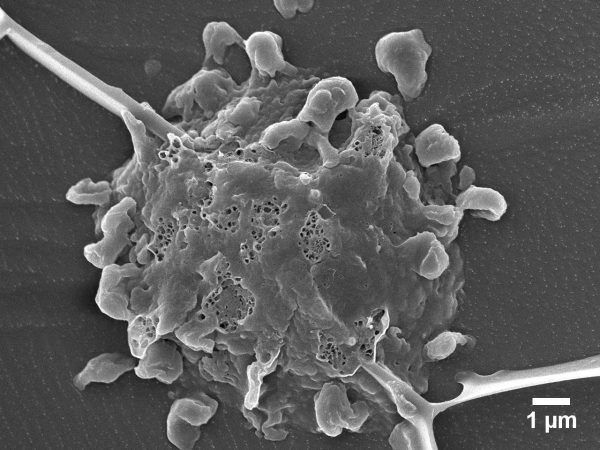Dane Grismer
| Ph.D., Chemical Engineering, 2015 University of Notre Dame, Notre Dame, IN M.S., Chemical Engineering, 2012University of Notre Dame, Notre Dame, IN B.S., Chemical Engineering, 2009 B.S., Paper Science and Engineering, 2009 North Carolina State University, Raleigh, NC |  |
Research Focus: Remediation of Bioparticle-Stabilized Foams in Commercial Bioreactors
Recent advances in mammalian cell culture proliferation have led to high product titer and volumetric productivity, while creating challenges for further increases in yield of therapeutic proteins. Increased sparging rates are required to maintain adequate gas-liquid mass transfer, but also create larger foam heads. Furthermore, the foam is stabilized by bioparticles—intact cells, cell debris, proteins, and other macromolecules—to create a Pickering foam. Addition of commercial antifoaming agents must be balanced with the considerations that they are effective for a limited time, interfere with gas-liquid mass transfer, and complicate downstream purification.


Cryo-SEM images of a healthy mammalian cell (left) and one undergoing apoptosis (right) demonstrate one way that anisotropic bioparticles are formed in bioreactors.
Our work has first sought to understand the interfacial phenomena underlying the progression of stabilization in these foams in order to disrupt them. Using a custom-developed continuously sparged foaming test apparatus, we have identified different driving behaviors at different time periods during bioreactor operation. During the period of rapid cell growth, Pickering foams formed by intact cells drive stability. As the titer increases and cells die later in process, proteins and cell debris increase the overall foam stability. We are now investigating various remediation strategies to both prevent stabilized foam from forming and to efficiently breakdown it down when it does. Various antifoam compositions, addition strategies, and other novel approaches are being actively explored.
